| Umělec 2005/3 >> Video Art Invading the Visual Sphere of Our Public Spaces | Просмотр всех номеров | ||||||||||||
|
|||||||||||||
Video Art Invading the Visual Sphere of Our Public SpacesUmělec 2005/301.03.2005 Mirjam Struppek | video in a public space | en cs de es |
|||||||||||||
|
In February 2004, I was commissioned to take a survey for an artistic initiative from Düsseldorf called STRICTLY PUBLIC. Since 2000, their vision has been to bring video art to the public in a variety of urban settings like subway- and train-stations, squares and intersections, suggesting that the urban environment is linked to the fleeting and ephemeral nature of video art. Large public screens serve as their canvas. From January 30 through February 29, 2004 they organized a screening on the largest LED display screen in Berlin at the busy street corner of Kurfürstendamm and Joachimstaler Sts. Ten short videos made by STRICTLY PUBLIC and 6 other international video artists were shown, interrupting the normal commercial program around 96 times per day. Curious about the effects, they asked me to develop an inquiry to undertake with the audience. Having worked for a while in a video art gallery, I was pleased to take this little step out of this ‘white cube’ and to find myself once again in an urban space, my home territory as a graduate of Urban Planning. I knew I would encounter a completely different audience.
So, does it make a difference to show video art in an urban setting on a large screen, usually strictly reserved for advertising or if lucky some daily news reports? The art group’s website states, “The interweaving of commercial information with works of art accentuates the contrast between the two disciplines. The attentive viewer will sense the tension produced by the opposing types of content and experience an unexpected and unique visual quickening (....) STRICTLY PUBLIC aims to break through the barriers of a medium that was developed for commercial and informative purposes. Mixing other elements into the common programs encourages new ways of visual thought and recognition.“ So how exactly does this intrusion of the commercial visual flow affect its spectators? What do people think of being faced with this ‘new’ kind of art in a public space? For two days I went out. It was cold and people walking with turned-up collars seemed to insulate themselves, shutting out the outer world constantly trying to catch their attention. It was as I had suspected, almost nobody wanted to interrupt their flow of movement to have a look at my survey. Maybe they feared it was just another trick to turn their attention to some kind of advert trying to snatch a bit of their precious time. Even the guy next to me distributing flyers refused to answer my survey, afraid to be seen not doing his job properly. I noticed a few people randomly looked at the screen while waiting for the traffic light to change. But was their gaze just caught by the flickering light or did some message of the one-minute clips reach their brain? I turned to the people waiting at the bus stop. I was successful; all in all I interviewed thirty-five people. They seemed to agree to make their wait for the bus pass more quickly, still longing for entertainment, though being fed up with the ads that constantly try to invade their commercially harried brain. And art?! Is that the real solution? Through the survey it was revealed that very few people noticed that there had been something different on the screen, interrupting the usual program. In fact the art was not perceived differently from the ads. Yet, the idea of art, of the possibility to see art was welcomed by almost everyone. But I was asked several times what art - especially what video art - is. Sure many people have gone to museums or exhibitions, and rarely did anyone admit, “I am not interested in art” (but were they just being polite?). Anyway, the mere idea that there would not be just ads and news, but art, triggered a lot of sympathy among those interviewed. Though I got the notion that people associated such different images with video art, or maybe even more accurately, they were unable to spontaneously imagine concretely what art on this screen might look like. So I wondered if it is art or just another type of new short-term entertainment that their hungry brains are longing for. I suspect a lot of them might hardly accept that art wants to interrupt them in their daily routine, the smooth flow of their everyday-life. These same people ready to support the idea of art on that commercial screen might get angry about street art reclaiming the sterile surfaces of the commercial urban sphere. We live in a time when art is accepted as something that is needed, but it is very blurry, what art is, where we find art, who shall pay for art, how it differs from entertainment and leisure facilities. Can art legally trespass on the commercial sphere of ads and entertainment or is becoming illegal the only possibility ‘true’ art in public spaces has in order not to be consumed just as entertainment? It is not so easy anymore since advertisement itself started to use ‘art-like’ strategies in the big fight for the attention of these humans learning more and more the art of selective perception, necessary to survive in our complex urban world. Another issue is touched on: can art be seen here as finding itself in the position of being exploited, or of permitting itself to be exploited? Thinking of the criticism of technological determinism, it became clear in the survey how strongly the outdoor LED screen was associated and predefined with advertisements, subconsciously influencing the behavior of the viewer. If video art thus tries to use these strongly predetermined forms of media that already have such a clear association with commercial content, does it automatically also support this function, does it give additional power to the medium? So the criticism might occur of its being a bad compromise, forming an alliance with the commercialized intention of the owner of the screen. A new strategy might be sniffed out to recapture the attention of the advertisement weary audience. Lure them with some ‘art’ candy! The more it matters how to make use of the screens as an artist, the more necessary the need to very clearly address this ‘pre-determined’ function, to hack the power structures through the content of the art pieces shown. In the clear hope to broaden the function of these screens and thus change the medium itself, creating spaces that offer people different viewpoints outside the dominating system. But I don’t in the least want to accuse STRICTLY PUBLIC of having failed in their goal to interrupt people’s visual habits. They are simply fighting a hard fight against the dominance of the commercial visual sphere in public space. It has become much harder to make a real impression, to be noticed by a not necessarily ‘art-educated’ audience. There are other ‘easier’ methods that artists have used to try to bring video art to a new audience in public spaces. In the tradition of graffiti and ‘ad-busting’, artists have used the context of the street, its furnishings and facades to critically take them over temporarily with their mobile screening facilities. During the Media-Art-Festival radical connector(s) 01 in October 2004 Filmgruppe Chaos from Bremen organized a screening intervention in the public space of the inner city of Weimar. “We brought the old Herder sculpture back to life, projections made him roll his eyes and let his mouth quiver - a critical gaze of the philosopher from past days on our modern world,” says Karsten Weber from the Filmgruppe Chaos. By projecting their visual material over the facades of Herder Square they caused an unexpected effect, thus being able to get attention and to disrupt the flow of the passers-by. Surprisingly, a lot of tourists expressed their sympathy, not being deterred by the strong political content of the screenings. So even provocation became harder to cause in public space! During the worldwide action in September 2001 against video-surveillance, they organized together with the group City Crime Control a project called TV CONTROL. As a performance screening event they reclaimed urban space as a place for discussion and exchange by transforming the local quarter into a ‘walkable television.’ At several places mobile TV sets or screening facilities were set up and people were invited to watch ‘TV’ together in the streets. “There were street-screenings with VCRs or TVs in a handcart or open car trunks, with electricity from the nearby shop, or monitors in shop windows and the sound through the radio via the open channel. And the audience came with their own ghetto blasters. With the aid of a ‘projection-minibus’ we could mark almost 100 meters of the shopping boulevard in Bremen with our visual ‘stamps’.” (Karsten Weber) Additionally a special TV-Magazine guided people through the critical program. Here screening-technology clearly becomes the catalyst for a process of intimate public communication, fostering critical discourse. Whatever strategy you prefer to employ for the invasion of the commercial visual sphere of public spaces, these are attempts to once again see urban space as a medium of communication with the city, with the new and unknown, and the frictions that arise from that. Finally, there is a broad need to reconsider what art in public space is. In this context we really should establish a culture of critical discourse about our more and more media determined society, to form a movement against the dominance of commercial visuals in our urban space.
01.03.2005
Рекомендуемые статьи
|
|||||||||||||
|
04.02.2020 10:17
Letošní 50. ročník Art Basel přilákal celkem 93 000 návštěvníků a sběratelů z 80 zemí světa. 290 prémiových galerií představilo umělecká díla od počátku 20. století až po současnost. Hlavní sektor přehlídky, tradičně v prvním patře výstavního prostoru, představil 232 předních galerií z celého světa nabízející umění nejvyšší kvality. Veletrh ukázal vzestupný trend prodeje prostřednictvím galerií jak soukromým sbírkám, tak i institucím. Kromě hlavního veletrhu stály za návštěvu i ty přidružené: Volta, Liste a Photo Basel, k tomu doprovodné programy a výstavy v místních institucích, které kvalitou daleko přesahují hranice města tj. Kunsthalle Basel, Kunstmuseum, Tinguely muzeum nebo Fondation Beyeler.
|







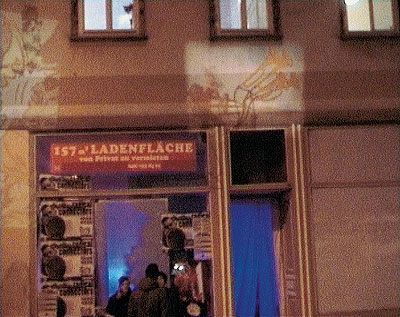
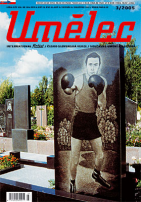
![[STRICTLY PUBLIC], projekce videoartu na venovní LED obrazovce v Berlíně, 2004. Akce proběhla v rámci Transmediale 04 -Fly Utopia!](http://88.208.121.86/upload/articles/gallery/2005-3-IMG_0294.jpg.thumb.png)
![[STRICTLY PUBLIC], projekce videoartu na venovní LED obrazovce v Berlíně, 2004. Akce proběhla v rámci Transmediale 04 -Fly Utopia!](http://88.208.121.86/upload/articles/gallery/2005-3-IMG_0293.jpg.thumb.png)
![[STRICTLY PUBLIC], projekce videoartu na venovní LED obrazovce v Berlíně, 2004. Akce proběhla v rámci Transmediale 04 -Fly Utopia!](http://88.208.121.86/upload/articles/gallery/2005-3-IMG_0290.jpg.thumb.png)
![[STRICTLY PUBLIC], projekce videoartu na venovní LED obrazovce v Berlíně, 2004. Akce proběhla v rámci Transmediale 04 -Fly Utopia!](http://88.208.121.86/upload/articles/gallery/2005-3-IMG_0283.jpg.thumb.png)


















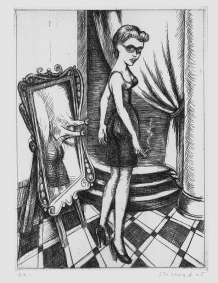




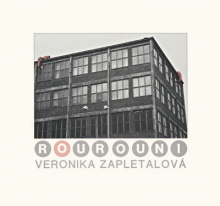
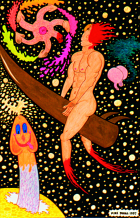

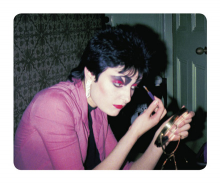


 We Are Rising National Gallery For You! Go to Kyjov by Krásná Lípa no.37.
We Are Rising National Gallery For You! Go to Kyjov by Krásná Lípa no.37.
Комментарии
Статья не была прокомментированаДобавить новый комментарий